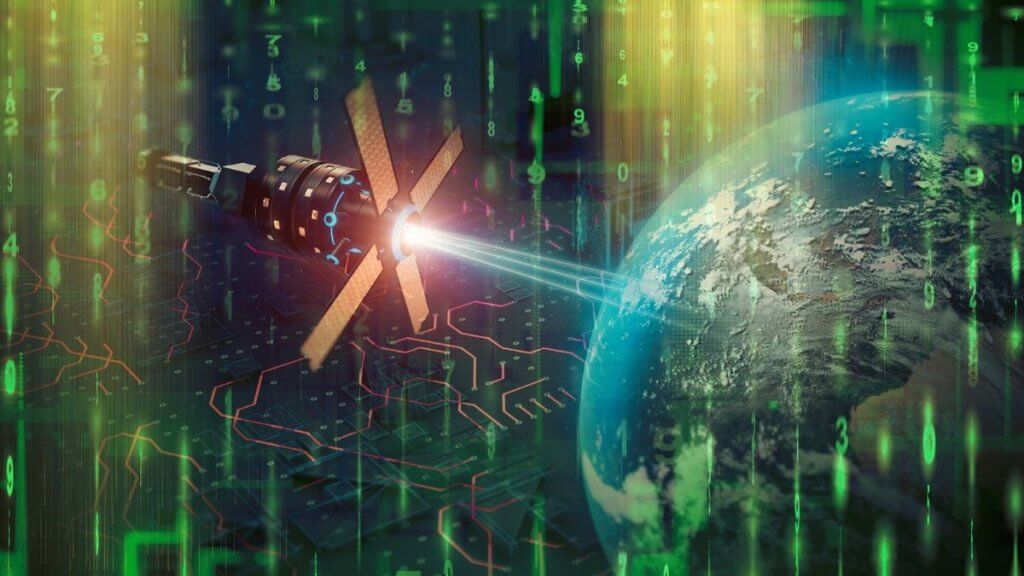
AI is already helping astronomers make incredible discoveries. Here’s how (Image Credit: Space.com)
World Space Week 2023 is here and Space.com is looking at the current state of artificial intelligence (AI) and its impact on astronomy and space exploration as the space age celebrates its 66th anniversary. Here, Paul Sutter discusses how AI is already helping astronomers make new, incredible discoveries.
Whether we like it or not, artificial intelligence will change the way we interact with the universe.
As a science, astronomy has a long tradition of looking for patterns by sifting through massive amounts of data, accidental discoveries, and a deep connection between theory and observation. These are all areas where artificial intelligence systems can make the field of astronomy faster and more powerful than ever before.
That said, it’s important to note that “artificial intelligence” is a very broad term encompassing a wide variety of semi-related software tools and techniques. Astronomers most commonly turn to neural networks, where the software learns about all the connections in a training data set, then applies the knowledge of those connections in a real data set.
Related: How artificial intelligence is helping us explore the solar system
Take, for instance, data processing. The pretty pictures splashed online from the Hubble Space Telescope or James Webb Space Telescope are far from the first pass that those instruments took of that particular patch of sky.
Raw astronomical images are full of errors, messy foregrounds, contaminants, artifacts, and noise. Processing and cleaning these images to make something presentable – not to mention useful for scientific research – requires an enormous amount of input, usually done partially manually and partially by automated systems.
Increasingly astronomers are turning to artificial intelligence to process the data, pruning out the useless bits of the images to produce a clean result. For example, an image of the supermassive black hole at the heart of the galaxy Messier 87 (M87) first released in 2019 was given a machine learning “makeover” in April 2023, resulting in a much clearer image of the black hole’s structure.
In another example, some astronomers will feed images of galaxies into a neural network algorithm, instructing the algorithm with the classification scheme for the discovered galaxies. The existing classifications came from manual assignments, either by the researchers themselves or by volunteer citizen science efforts. Training set in hand, the neutral network can then be applied to real data and automatically classify the galaxies, a process that is far faster and much less error prone than manual classification.
Astronomers can also use AI to remove the optical interference created by Earth’s atmosphere from images of space taken by ground-based telescopes.

AI has even been proposed to help us spot signatures of life on Mars, understand why the sun’s corona is so hot, or reveal the ages of stars.
Astronomers are also using neural networks to dig deeper into the universe than ever before. Cosmologists are beginning to employ artificial intelligence to understand the fundamental nature of the cosmos. Two of the biggest cosmic mysteries are the identities of dark matter and dark energy, two substances beyond our current knowledge of physics that combined take up over 95% of all the energy contents throughout the universe.
To help identify those strange substances, cosmologists are currently trying to measure their properties: How much dark matter and dark energy there is, and how they’ve changed over the history of the universe. Tiny changes in the properties of dark matter and dark energy have profound effects on the resulting history of the cosmos, touching everything from the arrangement of galaxies to the star formation rates in galaxies like our Milky Way.
Neural networks are aiding cosmologists in disentangling all the myriad effects of dark matter and dark energy. In this case, the training data comes from sophisticated computer simulations. In those simulations cosmologists vary the properties of dark matter and dark energy and see what changes. They then feed those results into the neural network so it can discover all the interesting ways that the universe changes. While not quite yet ready for primetime, the hope is that cosmologists could then point the neural network at real observations and allow it to tell us what the universe is made of.
Approaches like these are becoming increasingly critical as modern astronomical observatory churn out massive amounts of data. The Vera C. Rubin Observatory, a state-of-the-art facility under construction in Chile, will be tasked with providing over 60 petabytes (with one petabyte equaling one thousand terabytes) of raw data in the form of high-resolution images of the sky. Parsing that much data is beyond the capabilities of even the most determined of graduate students. Only computers, aided by artificial intelligence, will be up to the task.

Of particular interest to that upcoming observatory will be the search for the unexpected. For example, the astronomer William Herschel discovered the planet Uranus by accident during a regular survey of the night sky. Artificial intelligence can be used to flag and report potentially interesting objects by identifying anything that doesn’t fit an established pattern. And in fact, astronomers have already used AI to spot a potentially dangerous asteroid using an algorithm written specifically for the Vera C. Rubin observatory.
Who knows what future discoveries we will ultimately have to credit to a machine?








